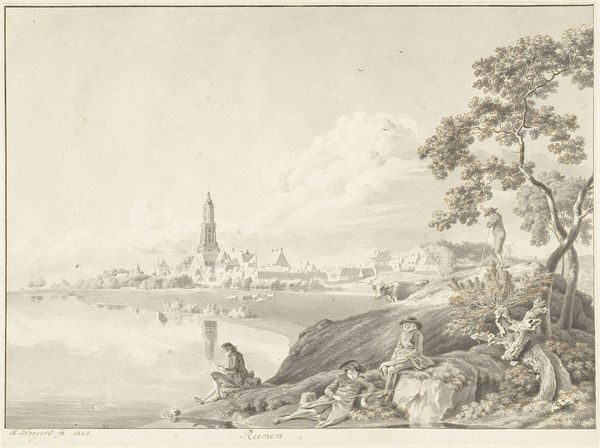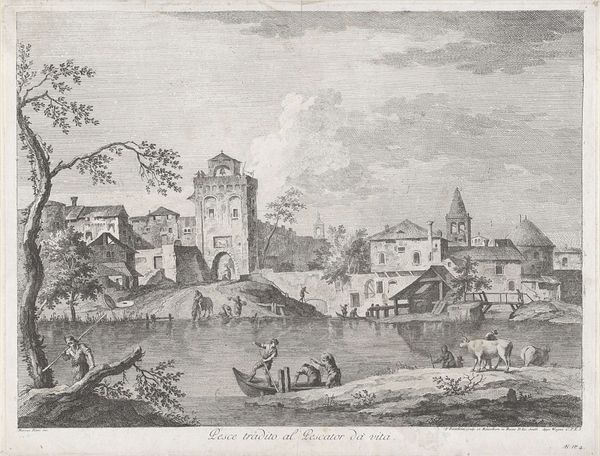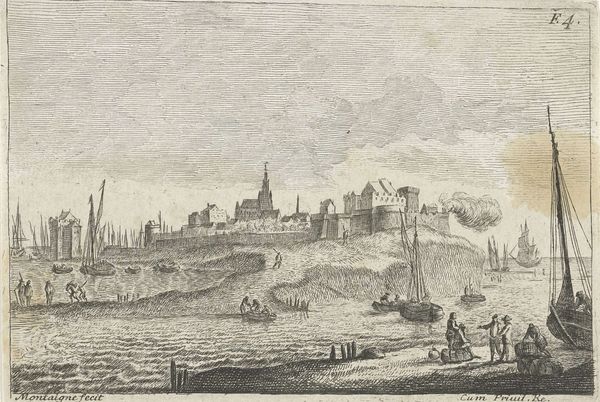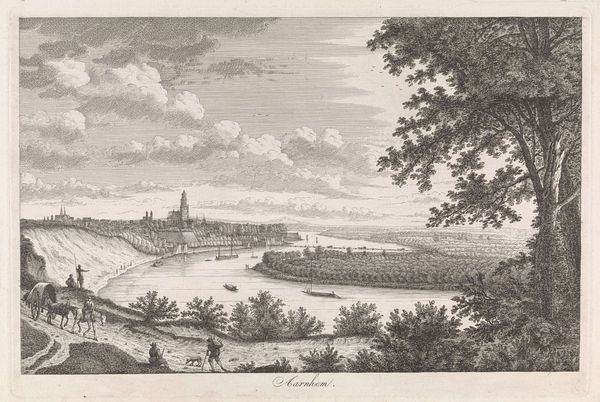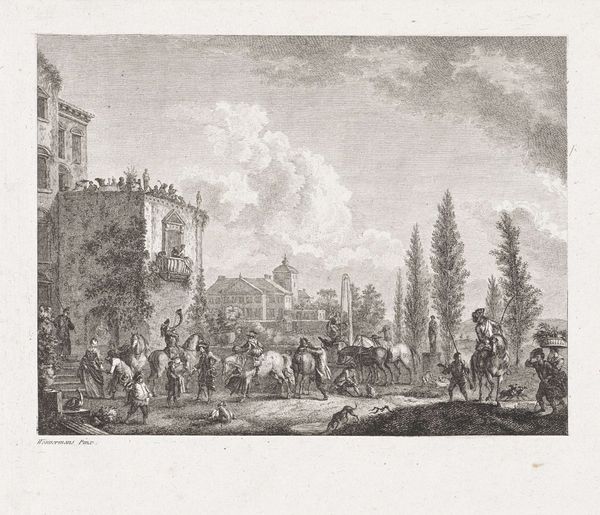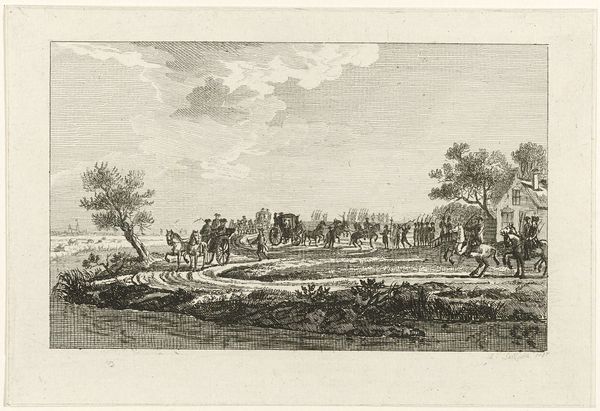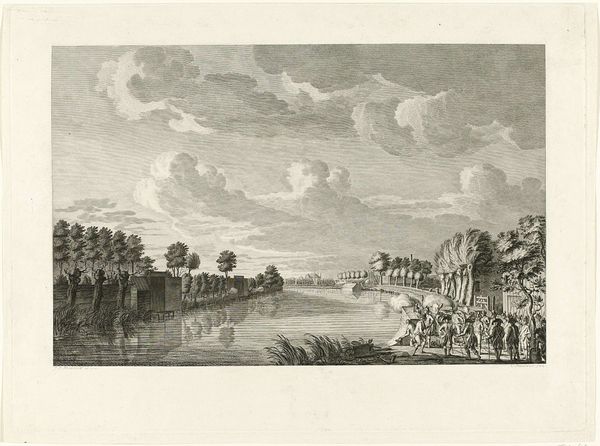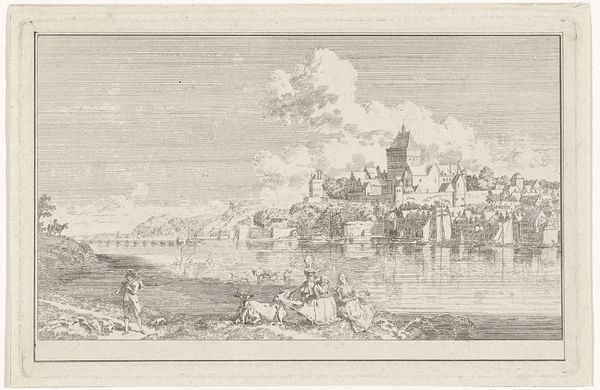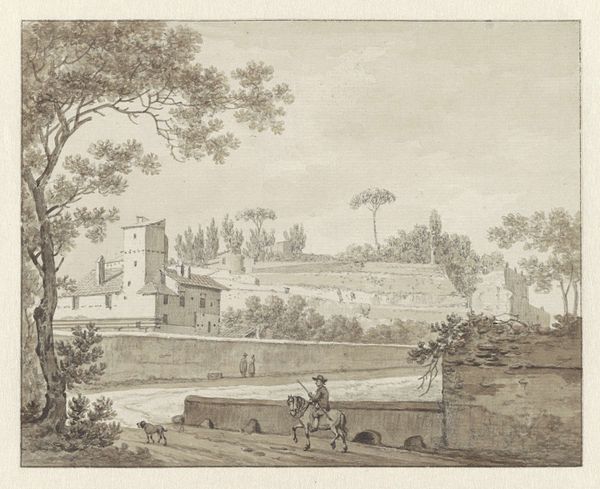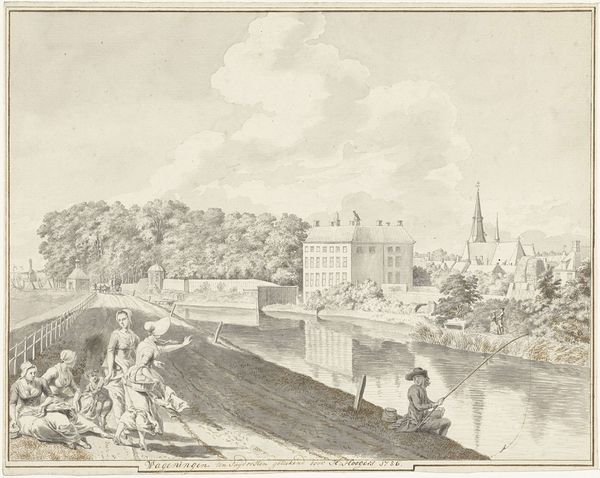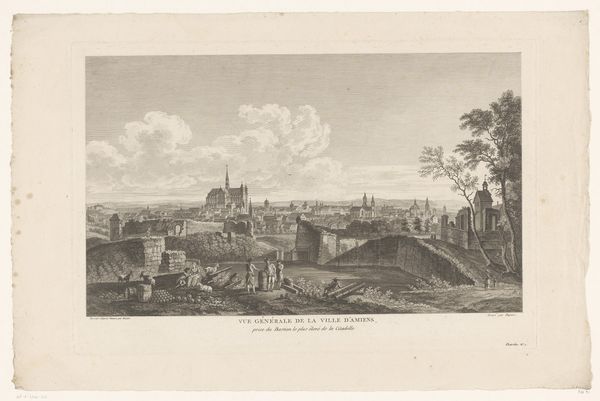
Gezicht op het Valkhof te Nijmegen en de doorgebroken Oischendijk, 1784 1784 - 1814
0:00
0:00
hendrikhoogers
Rijksmuseum
drawing, pencil
#
drawing
#
neoclacissism
#
pencil sketch
#
landscape
#
pencil
#
cityscape
#
academic-art
Dimensions: height 260 mm, width 406 mm
Copyright: Rijks Museum: Open Domain
Editor: We're looking at "View of the Valkhof at Nijmegen and the breached Oijschendijk," a drawing by Hendrik Hoogers made sometime between 1784 and 1814. It's primarily a pencil sketch, giving it this airy, almost dreamlike quality despite depicting what seems like a pretty devastating flood. I am so intrigued! What stands out to you most in this piece? Curator: Oh, what a delightful question! You know, it’s more than just a cityscape – it's a fleeting moment caught in time. I sense this almost melancholic feeling observing those figures in the foreground, juxtaposed against the stoic architecture behind them. Can you imagine the chaos and the disruption in Nijmegen during that period? Now, Hendrik uses academic style combined with Neoclassical elements in it. Do you get that, too? Editor: Definitely. It’s like he’s trying to impose some order, like the sharp lines, onto a scene that would have been utter chaos. Almost trying to elevate disaster through the lens of "fine art." But it is in the medium as well! A pencil drawing! Like an old newspaper. Curator: Exactly! It is very nostalgic. There's a certain poetic irony in using such precise lines to depict such watery devastation, don't you think? It’s as if he’s attempting to capture something that's already disappearing, the Valkhof and what used to surround it is lost and he is attempting to capture. What feelings evoke for you that perspective? Editor: It makes me think about how we try to hold on to things that are inevitably changing, whether it’s a landscape or a memory. The impermanence, the resilience of nature to erase memories. Curator: Indeed! And that tension, my dear, is what makes art like this timeless. We both see destruction; the drawing becomes then not a representation, it is the disaster! What have we learned, or rather, unearthed in this journey? Editor: That art sometimes isn’t about grand statements, but about capturing the quiet, sad moments in history. It is about memory in ruins, in broken things and pencil lines. Thank you!
Comments
No comments
Be the first to comment and join the conversation on the ultimate creative platform.
